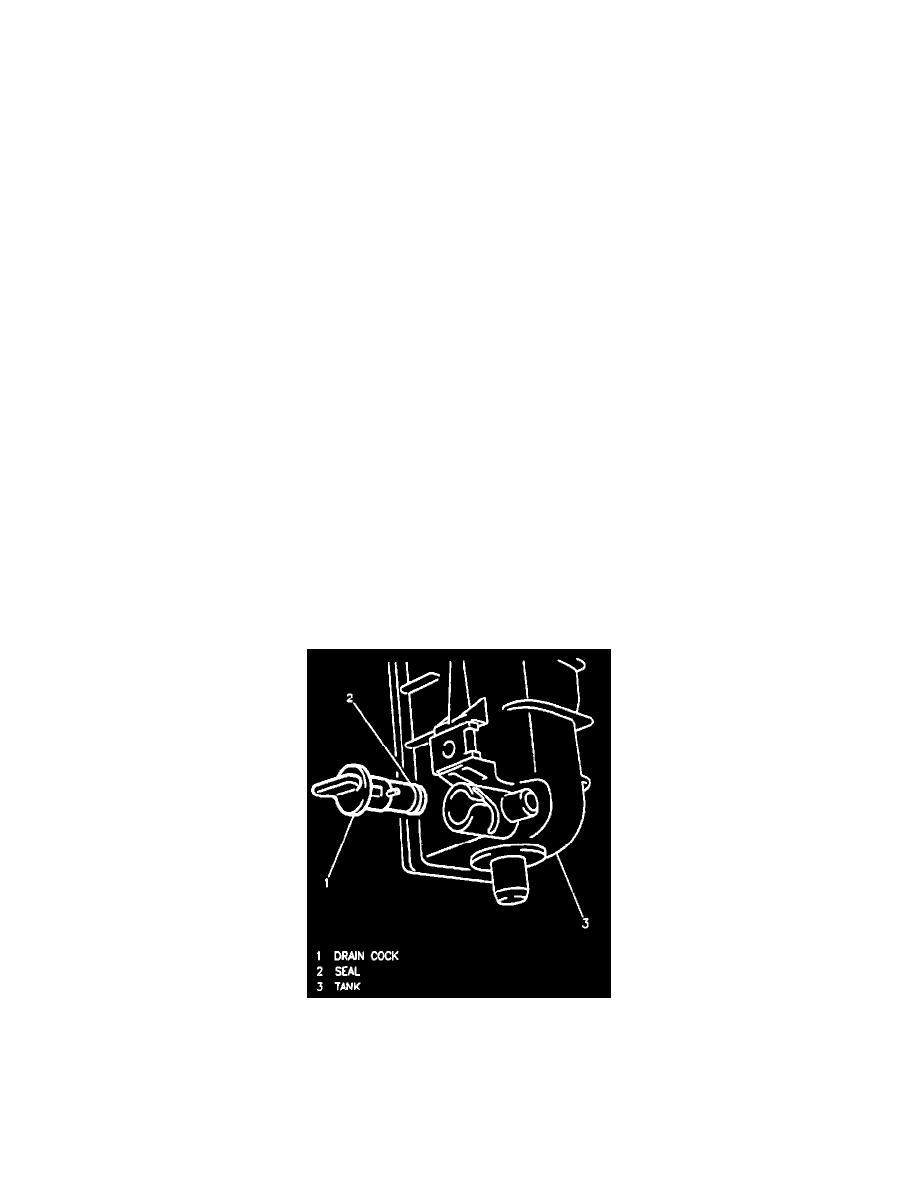Skylark V6-3100 3.1L VIN M SFI (1996)

Coolant: Service and Repair
DRAINING, FLUSHING AND FILLING THE COOLING SYSTEM
CAUTION: As long as there is pressure in the cooling system, the temperature can be considerably higher than the boiling temperature of the
ablution in the radiator, without causing the solution to boll. Removal of the surge tank cap while the engine is hot and pressure is high will
cause the solution to boil instantaneously - possibly with explosive force spewing the solution over engine, fenders and person removing the cap.
Under some conditions the ethylene glycol in engine coolant is combustible.
NOTICE: When adding coolant, it is important that you use GM Goodwrench DEX-COOL coolant. If coolant other than DEX-COOL is added to the
system, the engine coolant will require change sooner - at 50,000 km (30,000 miles) or 24 months.
Before draining and recovering the cooling system, inspect the system. Perform any service needed to ensure that the system is clean, does not leak and
is in proper working order.
Some coolant manufacturers are mixing other types of glycol in their coolant formulations; propylene glycol is the most common new ingredient,
However, propylene glycol is not recommended for use In GM vehicles that were manufactured with GM Goodwrench DEX-COOL. A
hydrometer will not always provide a correct measurement of freeze protection when anything other than ethylene glycol and water is being tested. The
degree of inaccuracy will vary depending on the proportion of other glycols present in the coolant. Hydrometers test the amount of glycol in a mixture by
measuring die specific gravity of the mixture; the more ethylene glycol, the higher the float balls go, and the better the freeze protection. Because
ethylene glycol and propylene glycol do not have the same specific gravities, hydrometer readings of mixtures containing propylene glycol give incorrect
values. It is recommended that a "refractometer" be used when testing coolant Refractometers test for the amount of glycol in a coolant mixture by
measuring the speed of light as it passes through the fluid and are not affected by the specific gravity of the glycol. For proper coolant testing, refer to
"Coolant Concentration Testing" in this Section.
DRAINING
1. Park the vehicle on a level surface.
2. Remove the surge tank cap, when the engine is cool, by:
^
Slowly rotating cap counterclockwise about a 1/4 turn and then stop.
^
Wait until any residual pressure (indicated by a hissing sound) is relieved.
^
After all hissing stops, continue to rotate counterclockwise until the cap is removed.
3. Insert piece of 5/16 inch. fuel line tubing (or equivalent) through lower tie-bar and over the radiator drain.
4. Open the radiator drain valve located at the bottom of the radiator tank.
^
For procedures requiring the cooling system to be partially drained, opening the radiator drain valve should provide sufficient draining; and no
further actions should be necessary.
5. Remove engine block drain plug.
6. Allow the coolant to drain completely.
